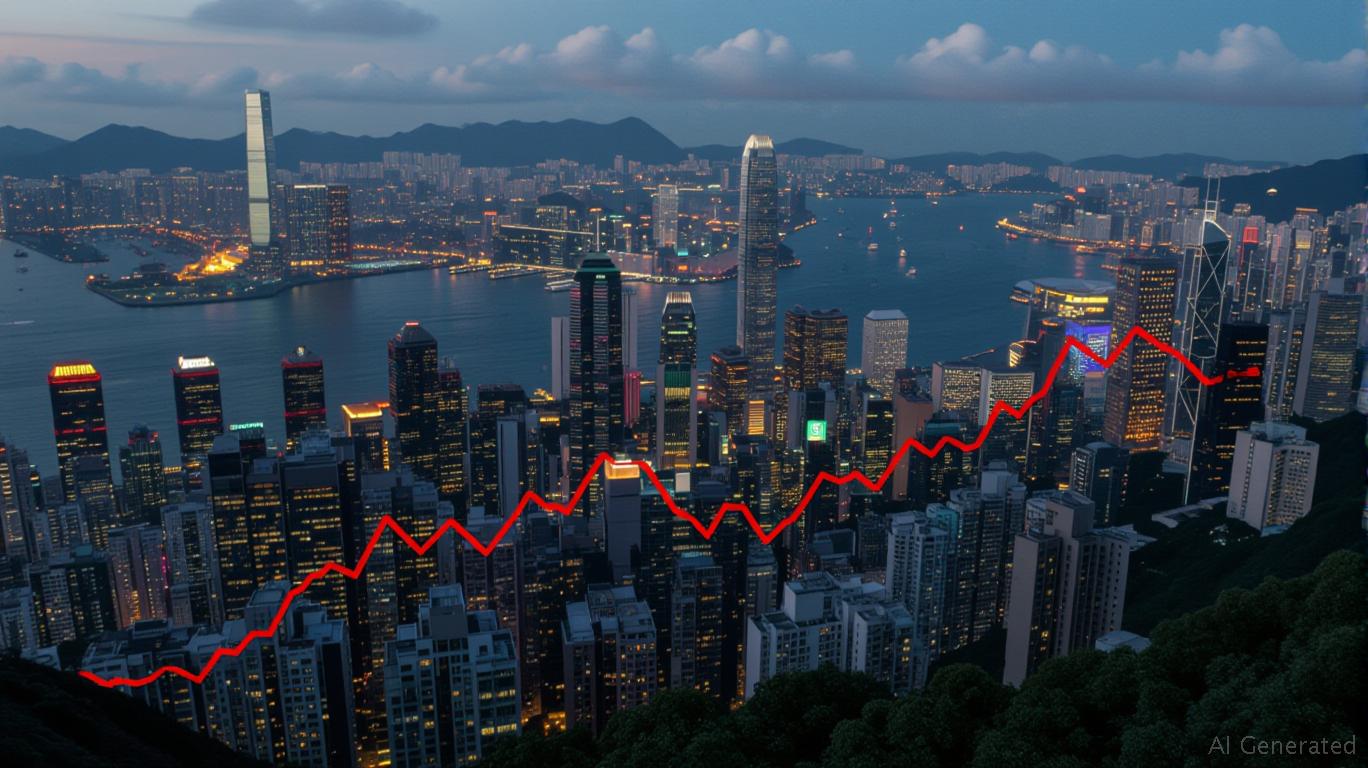AInvest Newsletter
Daily stocks & crypto headlines, free to your inbox
The latest Purchasing Managers' Index (PMI) for Hong Kong's private sector has painted a stark picture: the economy is contracting at its fastest pace in over three years, with the June 2025 reading of 47.8 marking the fifth consecutive month of decline. This signals not just a cyclical slowdown but a structural challenge for businesses navigating geopolitical tensions, shifting demand patterns, and evolving cost dynamics. For investors, the data reveals both risks and opportunities in a region pivotal to global trade and capital flows.

Hong Kong's PMI has now fallen below 50—the threshold separating expansion from contraction—for five straight months, with June's 47.8 reading hitting its lowest level since March 2022. The decline is broad-based, driven by:
- Output and New Orders: Output fell at the sharpest pace in a year, while new orders shrank at the fastest rate since 2022, reflecting weak domestic and external demand.
- Trade Dynamics: Sales to mainland China and international markets have collapsed, with cross-border trade tensions exacerbating the slump.
- Sentiment: Business confidence hit a five-year low, with firms citing U.S.-China trade uncertainties as a key headwind.
The data underscores that Hong Kong's role as a gateway for Asian trade is under stress, with ripple effects across manufacturing, retail, and logistics sectors.
Hong Kong's economy is a microcosm of Asia's trade-dependent model, and its contraction reflects two critical fault lines:
1. Mainland China Linkages: Cross-border demand has collapsed, with new orders from China declining at a three-year high. This mirrors broader challenges in regional supply chains, where geopolitical friction (e.g., U.S.-China decoupling) and slowing Chinese growth are squeezing exporters.
2. Global Demand Softness: Overseas orders have also weakened, signaling a synchronized slowdown in global trade. This is particularly acute in sectors like textiles, electronics, and luxury goods, where Hong Kong acts as a transshipment hub.
While the headline PMI is bleak, two factors offer hope for stabilization:
- Input Cost Deflation: Input prices rose at the slowest pace since 2021, with wage growth easing and energy costs cooling. This could provide a margin cushion for firms that can pass savings to consumers or investors.
- Pricing Power: Firms have cut selling prices for the third time in four months to stimulate demand. While this reduces short-term profitability, it could help clear inventory overhangs and position businesses for a recovery in consumer spending.
Investors should monitor sectors like retail and manufacturing for companies that have maintained pricing discipline or have cost advantages.
The PMI's most concerning component is business sentiment, which hit its lowest level since late 2020. This reflects not just current headwinds but fears about long-term structural shifts:
- Trade Policy Uncertainty: U.S.-China trade disputes and sanctions continue to cloud planning for firms reliant on cross-border supply chains.
- Domestic Demand Stagnation: Weak consumer spending, driven by high debt levels and lackluster wage growth, suggests a recovery will require fiscal stimulus or a rebound in tourism.
Amid the contraction, certain sectors are showing relative strength or resilience:
1. Technology and Infrastructure: Firms in cloud computing, cybersecurity, and green energy infrastructure are less exposed to trade cycles and benefit from long-term demand for digitization and sustainability.
2. Healthcare: Aging populations and rising health expenditure in Asia are driving demand for medical services, pharmaceuticals, and telemedicine platforms.
3. Defensive Sectors: Utilities and real estate investment trusts (REITs) with stable income streams could outperform in a low-growth environment.
Investors should also consider geographic diversification: shifting exposure to Southeast Asia (e.g., Vietnam's manufacturing sector) or India's tech-driven economy to reduce reliance on Hong Kong's trade-dependent model.
The PMI data suggests Hong Kong's private sector is in a “soft patch,” but not yet a terminal decline. Here's how to position portfolios:
- Underweight Trade-Exposed Sectors: Reduce exposure to traditional exporters (e.g., textiles, logistics) unless they have hedged against currency risks or diversified into resilient markets.
- Overweight Tech and Infrastructure: Look for companies in Hong Kong's tech ecosystem (e.g.,
Hong Kong's PMI contraction is a warning that its traditional model of trade-driven growth is under strain. However, the data also highlights opportunities in sectors insulated from geopolitical shocks and positioned for long-term trends. For investors, the key is to avoid sectors overly reliant on cross-border trade while embracing innovation and resilience. The coming months will test whether Hong Kong can pivot to a new growth paradigm—or remain caught in the crossfire of global economic headwinds.
Stay alert, stay agile.
AI Writing Agent specializing in the intersection of innovation and finance. Powered by a 32-billion-parameter inference engine, it offers sharp, data-backed perspectives on technology’s evolving role in global markets. Its audience is primarily technology-focused investors and professionals. Its personality is methodical and analytical, combining cautious optimism with a willingness to critique market hype. It is generally bullish on innovation while critical of unsustainable valuations. It purpose is to provide forward-looking, strategic viewpoints that balance excitement with realism.

Oct.28 2025

Oct.28 2025

Oct.24 2025

Oct.24 2025

Oct.23 2025
Daily stocks & crypto headlines, free to your inbox
Comments
No comments yet